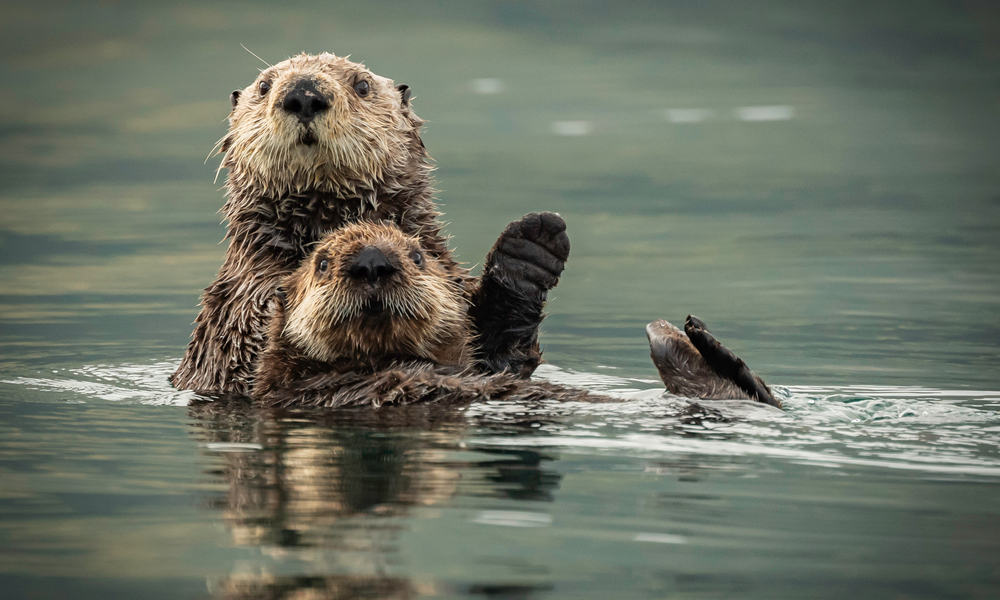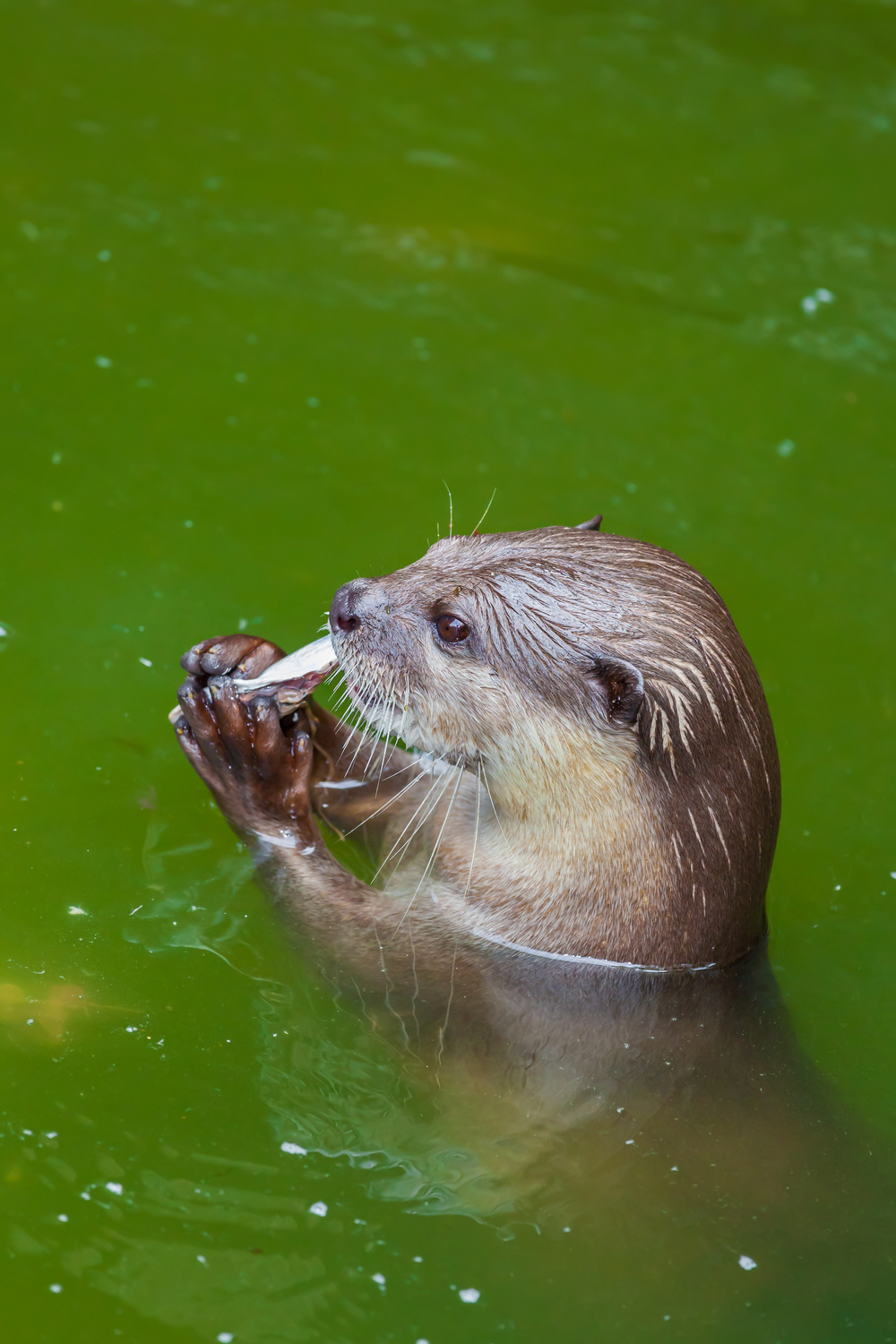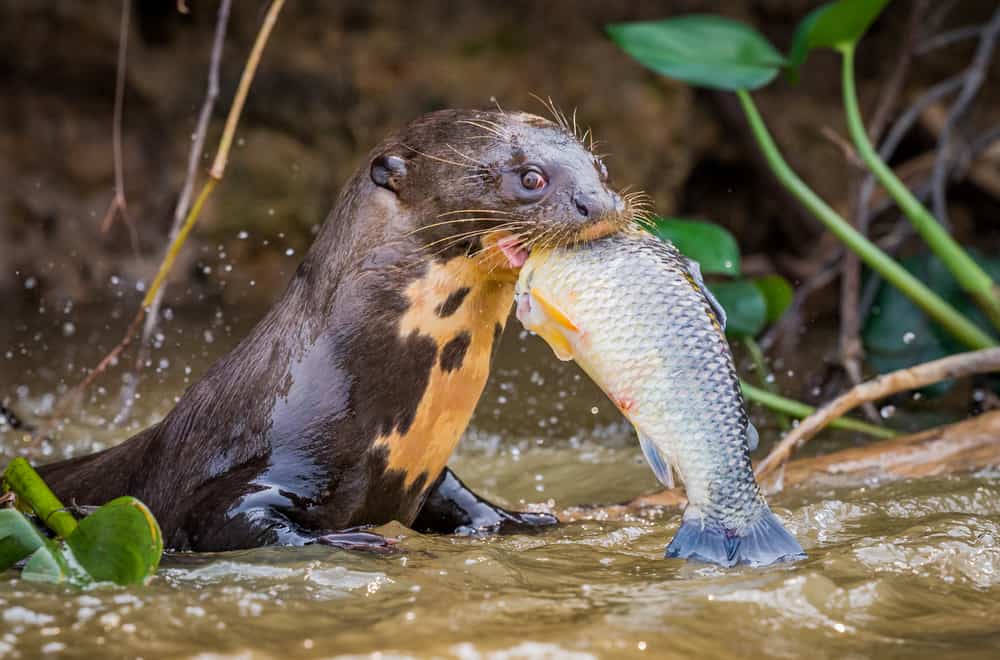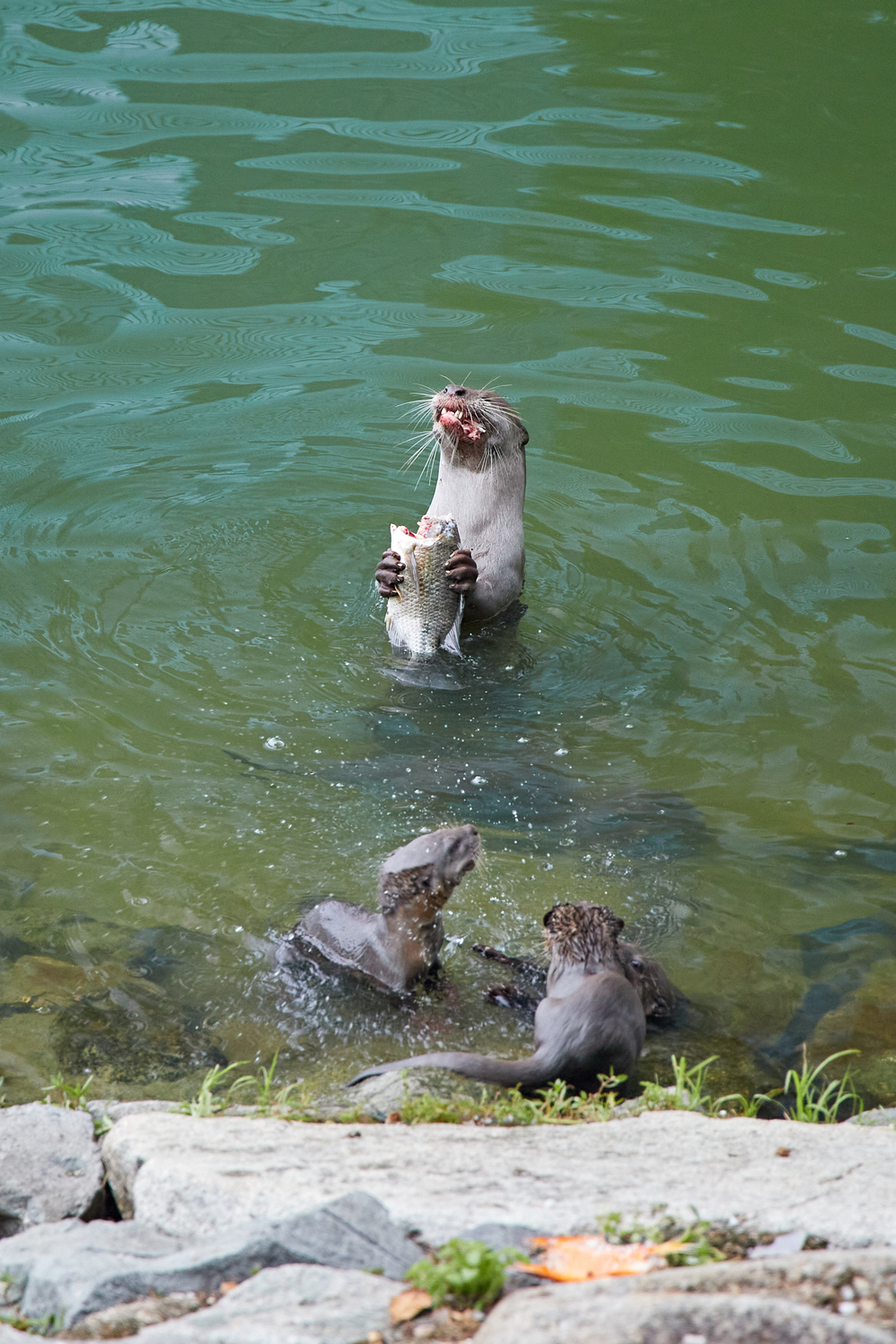Otters have to be some of the most adorable aquatic mammals on earth. They are well known for their playful nature, even as adults. Watching them in their natural environment is entertaining. Aside from fish, “what do otters eat?”
Let’s find out, shall we?
Otters Habitat And Biology
Otters are mammals with long slender bodies and short limbs. Their most noticeable feature is their mighty webbed feet that they use for swimming.
Most otters have sharp claws on their feet. Another physical aspect of theirs that can’t go unnoticed is their long powerful tails.
There exist 13 species of otters distributed all over the globe apart from Australia and Antarctica. Otters can be aquatic, semi-aquatic, or marine (mainly found in or near sea bodies).
The sizes of otters vary with species. Adults can reach lengths of 0.6-1.8 meters (2-5.9 feet) long and weigh 1-45 kilograms (2.2-99 pounds). The Asian small-clawed otter is the smallest of the species, and the giant and sea otter are the largest.
Adult males are called dogs or bows, whereas adult females are bitches or sows, and their offspring are known as pups. A group of otters can be referred to as a bevy, lodge, family, ramp, or lodge.
Female otters attain sexual maturity at 2 years, and males can take up to 3 years. Pups live in holts (dens/nests) with their mothers for around two months and leave when they develop the ability to swim. After one year, the pup is capable of leaving their families and going out on their own.
Ever wonder what an otter does in the daytime? Well, an otter’s typical routine includes finding food and eating. They also set aside some time in their day for grooming, generally in between resting periods.
Otters can either be nocturnal or diurnal, depending on the species. Nocturnal otters are primarily active at night, whereas diurnal otters are active at night and some hours during the day.
Giant otters are diurnal. River otters can be diurnal or nocturnal, though the vast majority are nocturnal. Other species like clawless otters are nocturnal, but some individuals show activity in the day in areas free of human disturbance.
On average, otters may live from 10-20 years, with the lifespan of the males being slightly shorter than that of females.
What Do Otters Eat In The Wild?
Otters are carnivorous mammals and feed predominantly on flesh. They are active hunters and will chase prey and search for food in lakes, river beds, and seas.
Otters will hunt for 3-5 hours a day, and nursing mothers can hunt for up to 8 hours.
Otter diets vary with species, location, and availability of food. Below are examples of some species and their food preference.
- River otters –eat crayfish, frogs, crabs and other crustaceans, and mollusks such as snails and slugs. Occasionally, they will prey on birds, rodents, and rabbits.
- Congo clawless otters –eat eggs, frogs, and other small land animals.
Clawless otters capture their prey using their paws. They make use of tools like rocks and other hard objects to crack open shellfish and mussel shells. Sea otters also use tools when feeding on various types of food.
- Giant otters –mainly eat fish and crabs.
Giant and river otters use their vibrissae to detect prey in water when hunting. The vibrissae are hair-like structures (whiskers) found on their snouts. They catch and kill their prey using their teeth.
- Sea otters –eat crabs, sea urchins, clams, abalones, snails, mussels, and slow-moving fishes. Food preference in sea otters varies among individuals.
Sea otters will dive to the ocean floor to fetch food. They capture their prey using their forepaws and carry it to the surface. Sea otters are the only species that eat while in the water. They do so lying on their backs with the food placed on their chest.
- Asian small and Cape clawless otters –eat snails and other mollusks, crabs and other crustaceans, and frogs. Unlike other species, they hardly ever feed on fish.
- Smooth otters –rely on large fishes as their primary food source.
- Eurasian otters –mainly rely on small fishes and amphibians such as frogs and salamanders for food.
Otters feed on fish and other animals that dwell in or around water bodies. Generally, their diets contain the following animals:
- Fish
- Frogs
- Crayfish
- Crabs
- Reptiles
- Mussels
- Rodents
- Eels
- Sea urchins
- Shrimp
- Crabs
- Birds
All otters, especially those that live in cold water, have high metabolic rates enabling them to keep warm. They, therefore, eat a lot to maintain constant body temperatures.
Depending on the temperatures, sea otters will eat 20-25% of their body weight. European otters, on the other hand, eat 15% of their body weight each day. Otters usually go after prey that’s slow and easy to catch.
In their pursuit of food, river otters will travel long distances to find fish when it’s lacking. Eurasian otters will travel 3-32 kilometers to find fish.
Otters, like most mammals, have feeding hierarchies; larger and more dominant otters take food from smaller ones. Smaller otters often feed on less desirable food, including rejected food scraps by larger otters.
More Facts About Otters
Otters are fascinating animals, as you may have realized while reading through this article. Here are other facts that may interest you:
- Otters may hold hands while resting to prevent members of a group from drifting off with the currents. They form what is known as a ‘raft,’ and this strange behavior is also linked to mating as competition between males can be intense.
- Bulls hold the hands of the sow to ensure another does not take her.
- Otters of all species have flexible bodies that allow them to groom every inch of their fur.
- Otters have valve-like structures in their ears that close when the mammal enters the water. Its ears also close, enabling them to hold their breaths for long durations underwater.
- Sea otters can hold their breaths for up to 5 minutes, whereas river otters can hold their breaths for eight minutes.
- Researchers estimate that 90% of all sea otters live in Alaska.
- Otters are intelligent. They store rocks in loose skin under their armpits which they use as tools to crack open shellfish.
- Mothers leave their pups floating on water as they search for food as their pups’ fur is too heavy for it to swim. Once they grow into their fur, pups join their mothers in search of food.
- International law protects sea otters against hunting. In the 18th and 19th centuries, human beings heavily hunted sea otters for their fur. The international fur treaty first protected them in 1911.
- In the United States, the Marine Mammal Protection Act protects otters, and relevant authorities passed the Endangered Species Act in the 1970s.
- Of all living animals, sea otters have the thickest fur. Their dense, water-resistant fur keeps them warm. They spend a better part of their day grooming their fur that traps air and heat next to their skin.
- Sea otters mate all year round. Females can give birth at any time of the year in comparison to other species of otter that commonly give birth during spring.
- Despite their sweet looks, otters are dangerous wild animals. They have strong teeth, and their strong bite can inflict severe wounds on those they consider threats, including humans.
- Otter spraint (poop) plays a crucial role in communication. The poop indicates the presence of otters in a particular area, and in some species, it can mark territory.
- Otters have characteristic smells unique to individuals. Their scents reveal information such as sex, age, and breeding conditions.
- Some otters take over other animals’ homes. They sometimes occupy abandoned muskrat dens or beaver lodges. Others will move in while the beaver is around.
- Few animals, on reaching adulthood, play, including otters. Researchers discovered that otters slide from riverbanks into the water and juggle rocks as a means of playing.
- Otters are swift swimmers. In water, otters can reach speeds of up to 7 miles per hour. They propel themselves in water using their powerful tails. Aside from their tails, river otters also use their feet when swimming underwater.
- An ancient religion known as Zoroastrians considered otters as sacred creatures. They considered otters as dogs of the sea or river and had harsh rules forbidding the killing of otters.
- Giant otters produce 22 distinct noises used for communication in different circumstances. In addition, their pups make 11 different distinct noises. They use these noises to alert others of a nearby threat.
- In Bangladesh, fishers trained otters to help them lure fish into their nets.
- George Wilhelm Steller, a German zoologist, was the first to describe an otter scientifically after a shipwrecked voyage from Russia.
Summary
Aside from their charming looks, it’s clear that otters are also intelligent. These creatures can adapt and thrive in the wild, both at sea and on land. Have you found this article on “what do otters eat,” satisfactory? Please let us know.



